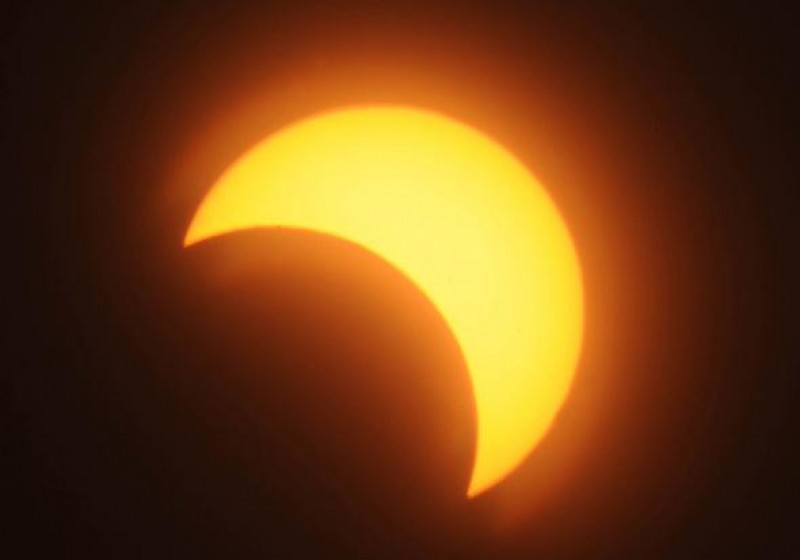
The coming month heralds the return of a cosmic pyramid, a series of stunning lunar pairings, and a partial solar eclipse. You’ll even have the chance to spy on Mars meeting up with its mythical rival.
So, dust off those binoculars and mark your February calendar!
ZODIACAL LIGHT—FEBRUARY 2-16
Starting tomorrow at about an hour after sunset and for the following two weeks, keen sky-watchers in the Northern Hemisphere can hunt down one of the most elusive astronomical phenomena: the zodiacal light.
Best seen from rural areas, this pyramid-shaped light is easily mistaken for the glow from a far-off city just over the horizon, and it is sometimes called the false dawn. But this ethereal light is actually caused by sunlight reflecting off ancient dust suspended between the planets. The best time to catch the ghostly sky light is about an hour after sunset, looking toward the western horizon from a dark region with low light pollution.
ALPHA CENTAURIDS—FEBRUARY 8
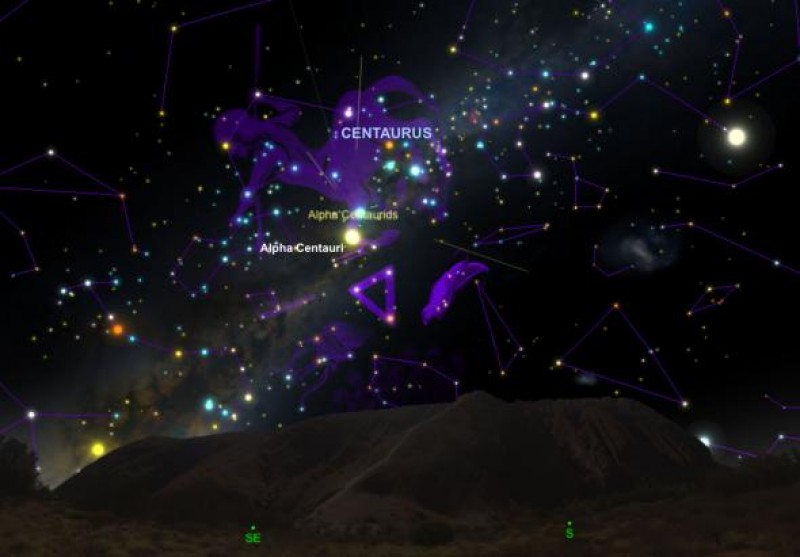
The Alpha Centaurid meteors appear to radiate from their namesake constellation.
Sky-watchers in the Southern Hemisphere will get to watch a modest meteor shower on this night, as Earth plows through a cloud of debris left behind by an unknown comet.
Known as the Alpha Centaurids, this annual shower seems to radiate from the constellation Centaurus—home to the closest star to our sun, the red dwarf Proxima Centauri. (What’s more, this nearby star hosts a potentially habitable planet.)
The shower is usually just a trickle, with rates of about half a dozen shooting stars an hour. However, these rates can sporadically increase to about 25 meteors an hour. Look for the Alpha Centaurids after local nightfall on the 8th and before dawn the next day.
MOON MEETS SATURN—FEBRUARY 11
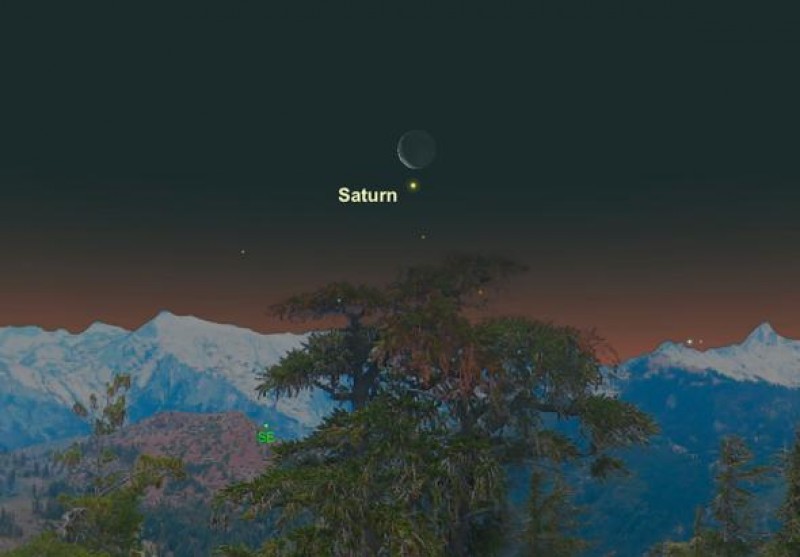
Creamy-colored Saturn will hang close to the moon on February 11.
Early risers on the 11th should look for the waning crescent moon posing next to the ringed planet Saturn, which will be hanging low in the southeast sky an hour before sunrise.
MARS AND ANTARES—FEBRUARY 12
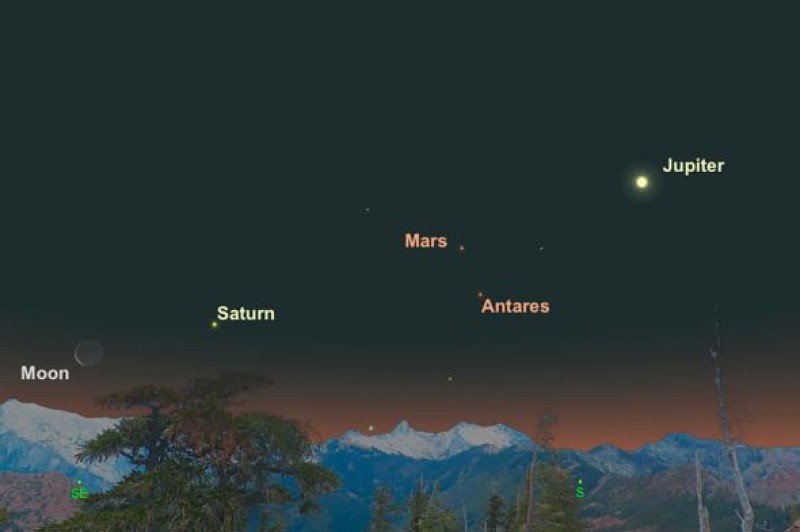
Mars and its "rival" Antares will meet up on the night of February 12.
At dawn, look toward the southeastern sky for two distinctly orange-hued dots of light—the red planet Mars and the red giant star Antares. One of the brightest stars in the constellation Scorpio, Antares means “rival of Mars,” a Greek name based on the star’s similar color and brilliance in our skies.
But while Mars is about a third the size of Earth, Antares is so large that if it replaced our sun, its outer atmosphere would reach beyond the red planet’s orbit.
On the 12th, the apparent gap between the two bright objects will be only five degrees, equal to the width of your three middle fingers held at arm’s length. In reality, Mars is about 140 million miles away from Earth, on average, while Antares is a whopping 600 light-years distant.
PARTIAL SOLAR ECLIPSE—FEBRUARY 15

SOLAR ECLIPSE 101 A total solar eclipse happens somewhere on Earth once every year or two. What is an eclipse? Learn more about how solar eclipses happen, the four types of eclipses, and how to view the sun safely if you're within the path of totality.
In the late afternoon on the 15th, a partial solar eclipse will greet sky-watchers across Chile, Argentina, Uruguay, Brazil, and Antarctica.
During the eclipse, the moon will glide between Earth and the sun and block part of the solar disk. How big a bite the moon takes out of the sun will depends on your location. The farther south you go, the more of the solar orb will get covered up during the peak.
The best place to see the event from land will be near the southern tip of South America. For instance, the eclipse will cover up to 40 percent of the sun over the city of Ushuaia, Argentina, while Buenos Aires will get to see only 17 percent coverage. You can find out what time the eclipse will peak for different cities along its path at EclipseWise.com.
Remember to always use proper eye protection while viewing the sun, even during an eclipse.
MOON HITS A BULL’S EYE—FEBRUARY 23
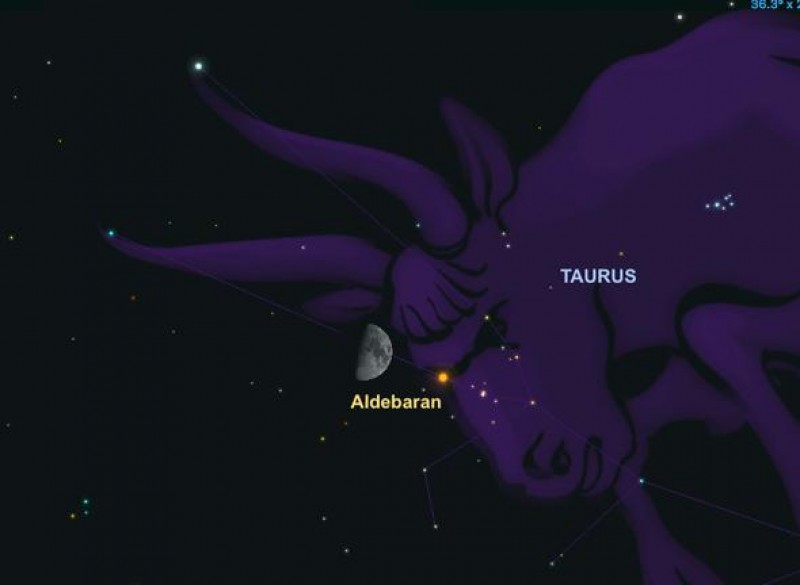
This evening, look for the first quarter moon as it glides through the constellation Taurus, the bull. The bull’s eye, the bright orange star Aldebaran, will be less than five degrees to the lower right of the moon for most sky-watchers. And for observers in northeastern North America, Europe, and northern Asia, the star will be so close it’ll be briefly hidden by the moon during what’s called a lunar occultation.
MOON MEETS REGULUS—FEBRUARY 28
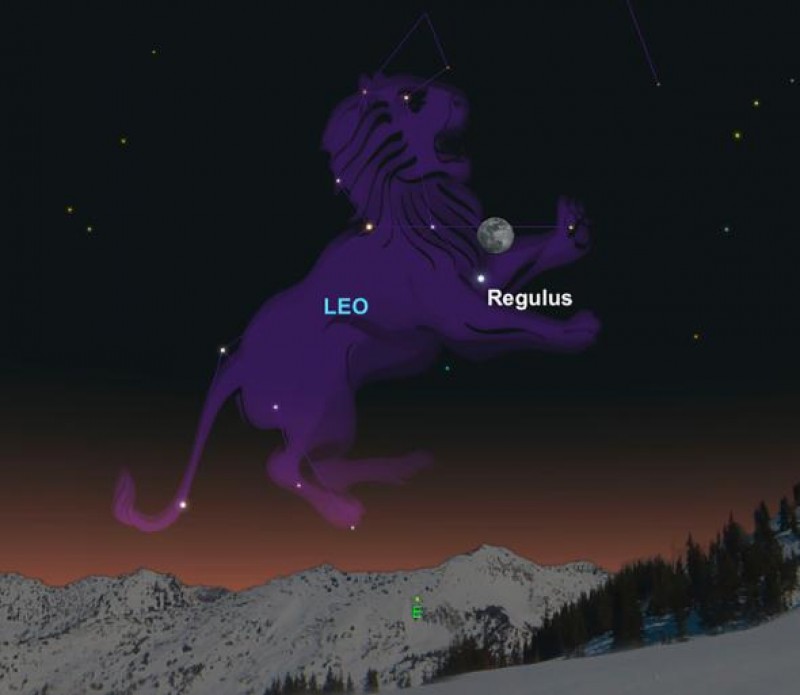
On February 28, the moon will visit the bright star Regulus.
As soon as darkness falls on the 28th, look for the majestic constellation Leo to rise above the eastern horizon. The nearly full moon will seem to perch just above the star Regulus, which marks the heart of the heavenly lion. The star will even appear to glide behind the moon for observers in most of eastern Canada and the northeastern United States.
Clear skies!
Source: Andrew Fazekas